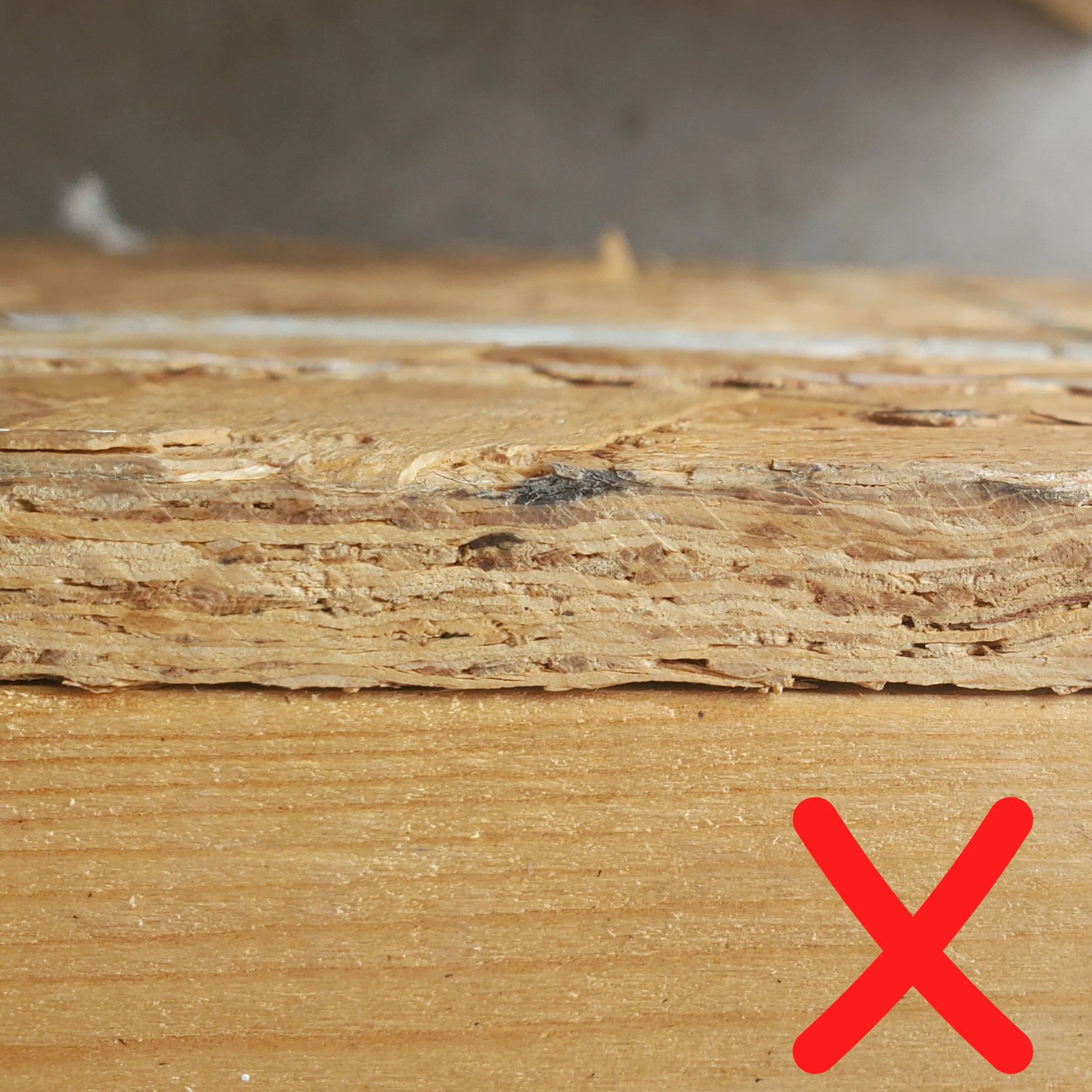What is Solid Wood?
Purchasing furniture can be a fun and exciting journey, but it can also turn into a nightmare. With companies nationwide competing for your hard-earned money it’s difficult to discern the honest from the dishonest. Each store advertises furniture made from the highest quality materials. So when the $1000+ dresser you purchase arrives at your house and you find that the only solid pieces of wood on the dresser are the drawer boxes, with the frame and top made completely from engineered materials with a paper-thin veneer, you're not exactly excited. Here at EZ Mountain, we want to be upfront with you about the quality of materials used. Below we’ll break down the differences between various materials and let you know exactly what we use.
Solid Wood
Our products are made from wood milled directly from trees here in the USA. Each piece starts as a tree in the forest. After the tree is cut it is transported to our builders where it is kiln dried to the proper moisture content for furniture making. If the product being built is made of logs the next step is sanding the logs and removing any bark that was left after the drying process (the only exception is Hickory, where the bark stays on permanently). If boards are needed, for a tabletop, dresser, or other product, the trees are taken to a lumber mill (like the image above) where they are sawn to the width and thickness desired for each item. After milling they are kiln-dried to the proper moisture content, just like the logs, and delivered to our builders. This is what we mean by solid wood. There is no step in the process where the wood is altered in any way other than being milled to size.
Engineered Wood
The alternative is known as engineered wood. As the name suggests this is a wood product that is man-made. Engineered wood includes Medium-density Fiberboard (MDF), particleboard, Oriented Strand Board (OSB), and plywood. We’ll take a closer look at each type below. If you’d like further information about each material check out this comparison.
Medium-Density Fiberboard
MDF is made primarily from the byproducts of sawmills, that is to say, sawdust and wood shavings. After collecting the materials they are further ground into smaller particles and dried. They are then mixed with wax and resin to form a sheet, usually 4ft x 8ft. A thin veneer is then added to the outside edges and faces to give the panel the appearance of wood grain. MDF is used in everything from kitchen cabinets, dressers & chests, tv stands, and more. If the price tag seems cheaper than it should be odds are it’s made of MDF.
Particleboard
Particle Board is made in a similar way to MDF. It is made with sawdust, but unlike MDF, it is not ground as finely. The sawdust is mixed with resin and pressed into a sheet that is 4ft x 8ft. A wood grain or laminate veneer is placed on the face of the panel. As with MDF, particleboard can be found in any type of furniture.
Oriented Strand Board
OSB is made from wood chips that are mixed with resin and pressed multiple times until the chips fuse together to form a solid sheet. OSB is used primarily for sheathing walls, or as floor underlayment on houses, but sometimes makes its way into furniture as well.
Plywood
Plywood is a product that is made from multiple layers of wood veneer, or plies, glued together to form a single sheet or panel, often 4ft x 8ft. Each layer is glued 90° relative to the layer before it. This ensures that each layer has the grain running in a different direction. When all the layers are combined the finished product is a very strong and sturdy panel. However, the real strength of plywood is that it is stable and not prone to expand and contract like solid wood. This makes it a great choice for kitchen cabinet frames.
Our products are almost entirely made from solid wood. There are a few exceptions to this, such as the backs of case goods (dressers, chests, nightstands) and cabinet frames where high-quality plywood is used. We never use low-quality MDF, particleboard, or OSB in our products. Our furniture is solid through and through. This means that when your kid dents the top of the dresser or table the piece isn’t ruined, whereas furniture made with a thin veneer would be irreparably damaged.
The materials out of which your furniture is made shouldn’t be a mystery, so we’re upfront and honest about each piece. If one of our items has plywood as the main surface we let you know, such as our Hickory Bark Top collection. If you have a question as to the build quality of a particular piece of furniture give us a call or shoot us an email. We’d be glad to discuss the materials used for each piece.








